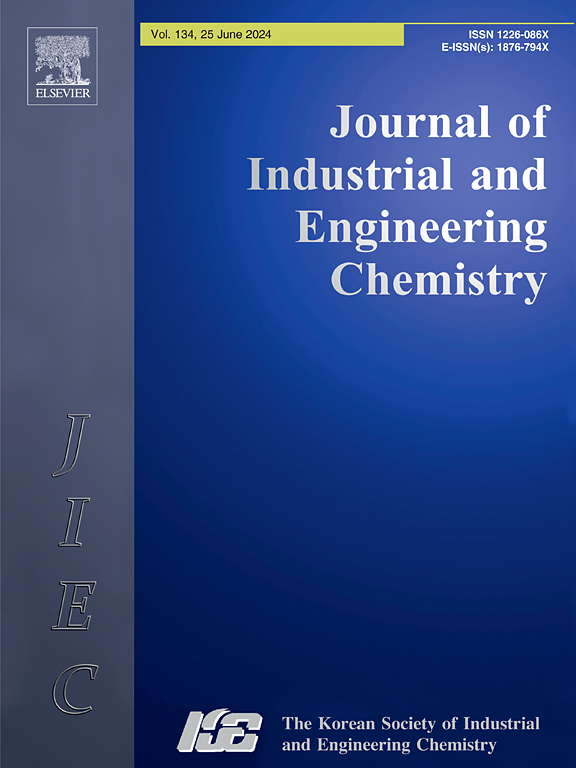CFD multiphase modeling of liquid–liquid hydrocyclones: A review
IF 5.9
3区 工程技术
Q1 CHEMISTRY, MULTIDISCIPLINARY
Journal of Industrial and Engineering Chemistry
Pub Date : 2024-10-30
DOI:10.1016/j.jiec.2024.10.044
引用次数: 0
Abstract
The present study aims to provide a state-of-the-art review of the multiphase CFD simulations of hydrocyclones in the scope of the Euler–Euler approach. It has been shown that, as far as turbulence is concerned, most works point to a full-closure RANS approach to account for curvature effects. There are distinct approaches for conducting these simulations, and their suitability strongly depends on the analysis’ goal. Most of the reported Euler–Euler simulations utilize a full two-fluid model or a simplified mixture formulation. The current status of multiphase treatments applied to liquid–liquid hydrocyclones (LLHC) relies on a coupled approach between CFD and a population balance model (PBM), with few attempts so far limited to the mixture model associated with discrete PBE solution methods. Multiphase macro-strategies were identified (individual monodispersed, serial monodispersed, and polydispersed simulations). By analyzing a set of representative studies, a guide for defining a multiphase strategy is proposed according to inlet feed stream properties. Valuable insights on the suitability of commonly adopted multiphase strategies were gained in light of estimating a phase coupling parameter. The polydisperse Euler–Euler model returned broader agreements with empirical efficiencies for intermediary couplings for solid–liquid scenarios. Moreover, liquid–liquid cases showed dependency on including PBM source terms.

求助全文
约1分钟内获得全文
求助全文
来源期刊
CiteScore
10.40
自引率
6.60%
发文量
639
审稿时长
29 days
期刊介绍:
Journal of Industrial and Engineering Chemistry is published monthly in English by the Korean Society of Industrial and Engineering Chemistry. JIEC brings together multidisciplinary interests in one journal and is to disseminate information on all aspects of research and development in industrial and engineering chemistry. Contributions in the form of research articles, short communications, notes and reviews are considered for publication. The editors welcome original contributions that have not been and are not to be published elsewhere. Instruction to authors and a manuscript submissions form are printed at the end of each issue. Bulk reprints of individual articles can be ordered. This publication is partially supported by Korea Research Foundation and the Korean Federation of Science and Technology Societies.

 求助内容:
求助内容: 应助结果提醒方式:
应助结果提醒方式:


